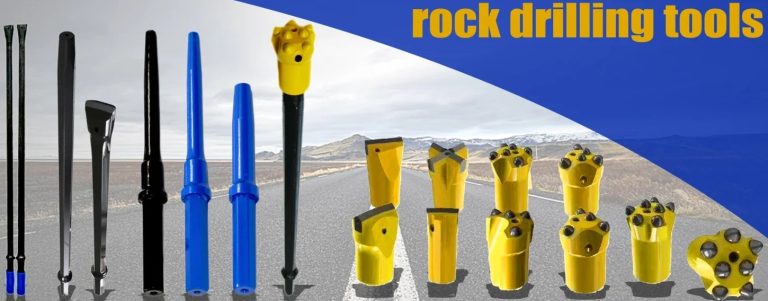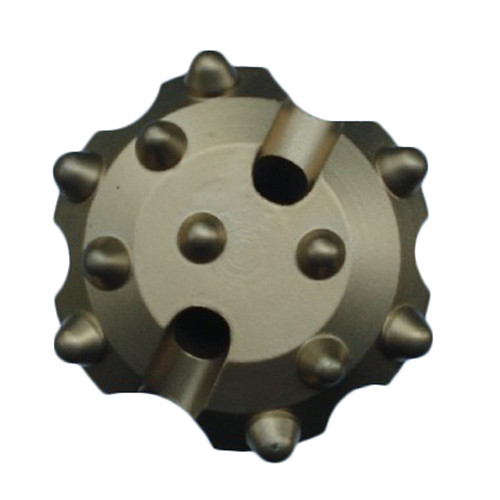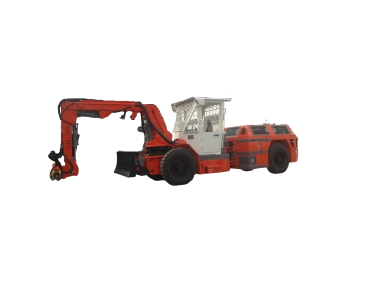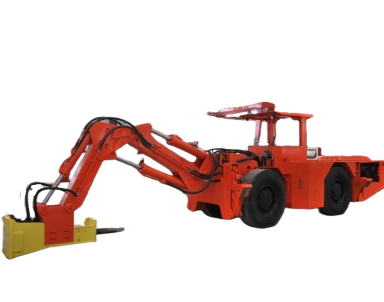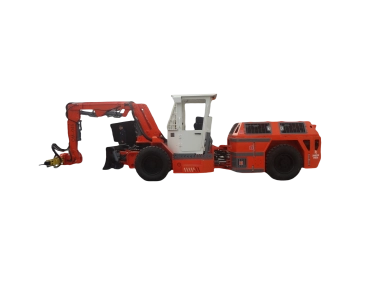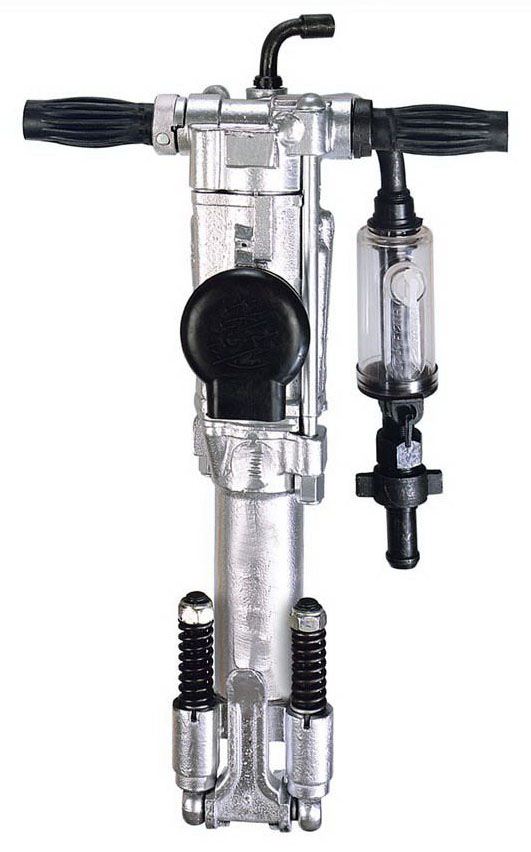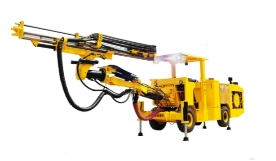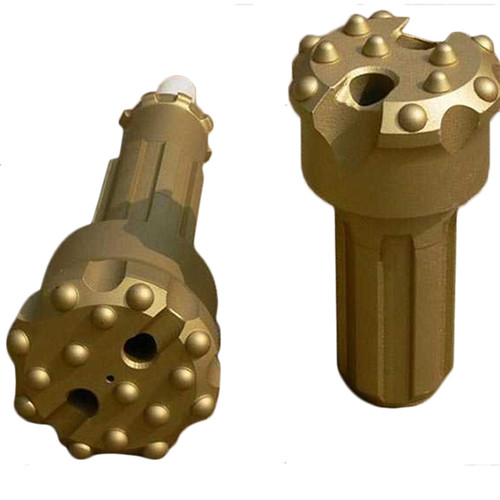你是否曾经盯着岩壁,思考如何才能不浪费时间和金钱地突破?选择 正确的凿岩机 工具可以成就或毁掉你的工作。这不仅仅是随便拿个钻头或钻杆那么简单。你需要一个适合你的工地、能处理岩石类型并能保障团队安全的工具。在本指南中,我们将逐步指导你如何选择最适合你工作的工具。无论你是在挖掘隧道还是在采石场爆破,选择合适的工具都能提高你的产量,减少麻烦。
为什么正确的工具在凿岩过程中至关重要
想想看,不匹配的工具会导致进度缓慢、零件损坏以及额外成本。但如果您选择得当,一切就会更加顺利。您的钻头使用寿命更长,钻孔更干净,整个操作也更加顺畅。
对项目效率的影响
优质的工具可以加快钻孔速度。它能更轻松地穿透坚硬的表面。这意味着更少的停机维修次数,每天覆盖的地面面积更大。想象一下,您无需费力解决堵塞问题,而是能够完成任务,顺利完成工作。
安全也至关重要。合适的工具可以减少振动,避免操作员疲劳。它们还能降低因滑倒或断裂而发生事故的几率。
为您的运营带来长期利益
从长远来看,正确的选择可以节省资金。减少机器磨损,减少更换次数,并赢得可靠服务的声誉,从而带来更多工作。关键在于树立您品牌的信誉,让您成为一位能够出色完成工作的供应商。
评估您的项目需求
从这里开始。了解你的目标。每个网站都不一样,所以要根据具体情况量身定制你的选择。
评估岩石类型和硬度
岩石种类繁多。花岗岩的硬度比砂岩更高。如果可以,请测试样品。使用简单的划痕测试或实验室分析来评估硬度。较软的岩石可能需要更细的尖端以避免破碎。较硬的岩石则需要更坚韧且不易钝化的材料。
还要考虑湿度。潮湿的环境会影响工具的性能。它们可能需要涂层来防锈。
考虑钻探的规模和深度
你要钻多深?锚杆的浅孔与矿井中的深爆破不同。较长的钻杆可以钻深孔,但会增加重量。还要考虑孔径。较宽的孔需要更坚固的钻杆,以免弯曲。
对于大型项目,要考虑产量。大批量钻孔需要刀具在多次循环后仍保持锋利。
现场环境因素
天气恶劣。寒流使金属易碎。高温使零件变形。选择适合当地气候的工具。
灰尘和碎屑?配备良好冲洗通道的工具可以更好地清除切屑,保持钻头冷却和清洁。
探索凿岩工具的类型
有很多选择。 每种方法都适用于特定的工作。让我们来详细分析一下。
圆头钻头 vs. 十字头钻头
齿槽钻头在坚硬岩石中熠熠生辉。其圆形齿片破碎效率高。在磨蚀性环境中,使用寿命更长。
十字形钻头在较软或破碎的岩石中效果很好。X形钻头切割干净,碎屑排出速度快。但在坚硬的岩石表面,十字形钻头磨损更快。
| 工具类型 | 最适合 | 优点 | 缺点 |
| 钮扣钻头 | 坚硬、磨蚀性的岩石 | 耐用、高穿透力 | 初始成本较高 |
| 十字钻头 | 柔软、破碎的岩石 | 排屑效果好,价格实惠 | 在恶劣条件下磨损更快 |
杆和柄:长度和材料选择
钻杆将钻头连接到钻头上。钢制钻杆通常强度较高。但硬质合金钻杆的抗弯曲性能更好。
长度很重要。短柄适用于精密作业。长柄适用于狭窄空间作业。务必确保柄部与您的机器匹配,以确保牢固安装。
- 钢棒:坚韧且灵活。
- 硬质合金刀片:增加刃口寿命。
- 螺纹端:确保连接紧密,无滑脱。
联轴器和适配器等配件
别忽视这些。联轴器能顺畅地连接杆。适配器适用于各种特殊设置。
挑选一个 采用精准螺纹,避免泄漏或断裂。高品质确保避免停机。
质量工具中需要寻找的关键特性
并非所有工具都一样。通过检查这些特征来识别优秀的工具。
材料成分和热处理
高碳钢经久耐用。热处理工具不易断裂。选择回火均匀的工具,以平衡硬度和韧性。
涂层也有帮助。它们可以防止潮湿环境下的腐蚀。
性能设计元素
凹槽设计可有效清除废物。凹槽越深,可处理更多碎屑。
刀头几何形状会影响切割效果。锥形设计可提高切割速度,弹道形设计可有效切割坚硬岩石。
与您的钻井设备的兼容性
与您的钻机功率相匹配。功率太弱,钻机就会陷入泥潭。功率太强,钻机工具就会被震碎。
检查螺纹类型。常见的螺纹类型,例如 R32 或 T38,大多数都适用,但请确认。
平衡成本和价值
价格很诱人,但要考虑长远。
初始投资与生命周期成本
便宜的工具经常坏。为了耐用,前期投入会更多。计算总拥有成本:购买成本加维修成本。
一个坚固耐用的工具,价格可能翻倍,但使用寿命却延长五倍。这才是真正的节省。
维护和更换注意事项
易于清洁的工具节省时间。模块化设计让您无需更换所有部件即可轻松更换。
做好备用计划。保留一些备用件,避免停机。
供应商支持和保证
优质供应商提供产品保修。寻找涵盖缺陷的保修。快速的零件交付,助您顺利前行。
测试和选择供应商的技巧
先试后买。现场测试展现真实性能。
进行现场试验
根据您的条件运行工具。测量速度、磨损和易用性。
比较几个就能发现差异。
评估供应商的声誉
查看评论。与之前的买家交流。可靠的买家都有良好的记录。
- 经营年限:显示稳定性。
- 认证:如质量 ISO。
- 客户故事:真实的结果证明。
独特项目的定制选项
有些工作需要调整。好的供应商会提供定制长度或材料。
这完全符合您的需求,使您的工作超越标准。
应避免的常见错误
从别人的失误中吸取教训。
忽视工具兼容性
不匹配会导致故障。务必仔细检查规格。
忽略操作员反馈
你的团队最了解情况。倾听他们对感觉和表现的意见。
为了短期节省而牺牲质量
这样做只会适得其反。糟糕的工具不仅会拖慢你的速度,还会增加后期的成本。
通过明智的选择打造您的品牌
精心挑选展现专业技能。客户注意到流畅的运营。这能为您树立专业服务者的声誉。
分享您的成功经验。案例研究将重点介绍合适的工具如何助力您的项目。这将吸引更多业务。
在竞争激烈的领域,这些决定会让你脱颖而出。
烟台驰鸿机械设备有限公司简介
作为地下采矿领域值得信赖的供应商, 烟台驰鸿机械设备有限公司 该公司专注于凿岩钻具,脱颖而出。该公司拥有十多年的行业经验,在中国拥有大型生产基地,生产符合欧盟 CE 和 ISO 认证等高标准的设备。从装载机到卡车和钻头,他们的产品种类繁多,所有产品都以敏锐的品质打造。他们的团队由技艺精湛的工人和技术专家组成,致力于改进设计。此外,他们还提供可靠的售后支持,例如维护计划和快速修复,以确保您的工地正常运转。如果您正在寻找可靠的工具,他们值得一看。
结论
总而言之,选择合适的凿岩工具的关键在于了解您的场地、选择匹配的功能以及选择可靠的供应商。做好这些,您的项目就能顺利进行,问题更少,成果更佳。选择正确的凿岩工具,才能长远受益。
常见问题解答
我应该考虑哪些因素来为我的项目选择合适的凿岩工具?
首先考虑岩石硬度、钻孔深度和现场条件。然后,根据钻机选择合适的材料和设计,确保最佳匹配度和安全性。
岩石类型如何影响为您的项目选择合适的凿岩工具?
坚硬的岩石需要像钮扣钻头这样耐用的钻头来延长使用寿命。较软的岩石则适合使用十字钻头,这样切割干净利落,还能轻松清除碎屑。
自定义选项是否有助于为您的项目选择合适的凿岩工具?
是的,特殊长度或涂层等调整可以使工具适应独特的场地,从而提高性能并减少浪费。
是的,特殊长度或涂层等调整可以使工具适应独特的场地,从而提高性能并减少浪费。
良好的支持意味着快速的零件、保修和建议,从而保持较低的停机时间和稳定的运营。




